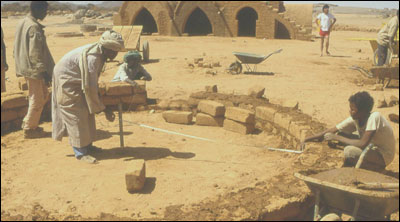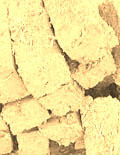
Promoting Local Capacity
Developing local capacity to meet shelter needs in the changing environment of the Sahel, West Africa.
In the Sahel of sub-Saharan Africa, sedentarisation, population growth, a shift to permanent dwellings and changes in aspirations in recent years have meant that the demands for housing, services and infrastructure have changed and increased.
The demand for various forms of shelter using traditional building methods heavily dependant on trees and organic material puts unsustainable pressure on the land and its organic resources. Whole forests have been destroyed and some tree species used in construction no longer exist. Previously viable techniques have often become obsolete or simply unviable under today’s circumstances, whilst new techniques and materials are inaccessible for the majority.
Over the past 15 years, Development Workshop has worked with and trained people to develop responses to this changing environment in Burkina Faso, Mali, Mauritania, Niger, and Senegal:
- developing habitat and environmental strategies through participative assessment of local conditions.
- developing practical programmes for environmental resource management.
- training men and women to develop skills to build with available resources.
The promotion of woodless construction has been a major part of this work. Woodless Construction (Construction sans Bois) is the name that is now used in the Sahel countries to describe the construction of vault and dome roofed buildings using ordinary hand moulded sun dried earth bricks. No presses, no cement… and no trees. The roofs are built without any supporting shuttering, and thus the entire structure is made of local earth, seasonably available water, and with locally developed skills.
Woodless construction saves trees. It also provides durable, comfortable and affordable buildings with local resources. It develops local skills and it generates local income opportunities.
Development Workshop first demonstrated these traditional Middle Eastern building techniques in the Sahel in Niger in 1980. From 1992 dedicated training programmes designed by DW have enabled hundreds of rural builders to be trained in the woodless construction techniques. Trainees can then use their new skills to construct a wide variety of buildings including homes, cereal banks, literacy centres, mosques and churches, through to schools and dispensaries.
